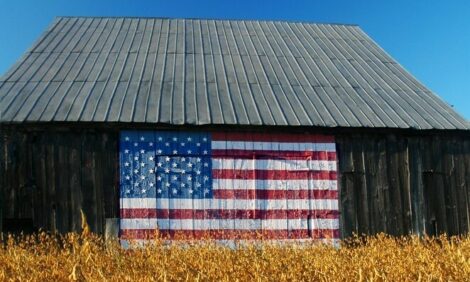



CME: US Swine Breeding Herd Contracting Slowly
US - A story published by farminguk.com quoting Britain’s National Pig Association saying a “world shortage of pork and bacon next year is now unavoidable“ got the attention of a number of US news outlets on Monday, write Steve Meyer and Len Steiner. Several of them ran related stories
and a few even called us to discuss the sudden revelation that world
pork production will decline in the face of higher feed costs. It’s good to
know that the rest of the world is discovering what DLR readers have
known for a long time.
The farminguk.com story does cite significant declines in European sow herds over the 12 months that ended in June. The declines
range from 1.3% in Germany to a staggering 13% in Italy. Sow herds in
EU pig industry leaders Denmark, France and Netherlands have declined by 2.3%, 3.2% and 3.6%, respectively, during that 12 months.
The story correctly cites high feed costs as the driver but then
goes on to attribute those increases only to low global output of corn
and soybeans. There was no mention of the increase in corn-based
ethanol output that actually launched the cost increase back in 2007.
The U.S. swine breeding herd is likely contracting but the
rate is apparently slow at the present time. We’ll get a fresh read on
this situation on Friday when USDA releases its quarterly Hogs and
Pigs Report at 3:00 p.m. EDT. Pre-report estimates will likely be released by wire services tomorrow or Wednesday. Watch DLR for those
important figures.
The latest actual sow slaughter data that we have is for the
week that ended September 7, Labor Day week. Total U.S. slaughter
that week was 53,600 head, 6.3% more than last year’s 50,400 head.
This marks the eighth time in nine weeks in which sow slaughter was
higher than year-ago levels but the increases of the last two weeks
were modest when compared to the surge in July. Part of the higher
sow numbers is, we believe, due to higher imports of cull sows and
boars from Canada. We say “we believe“ because USDA has not released any livestock import data since September 1 and warns that
data back to August 18 may be revised. Sow/boar imports jumped in
mid-July. We think higher imports from Canada account for about half
of the increase for the week of September 7. The sow purchase data
from mandatory price reporting suggest that the two weeks since September 8 have seen LOWER sow slaughter than last year. On the other hand, the percentage of gilts in weekly barrow and gilt slaughter increased sharply in the weeks ended September 7 and 14. The sampling technique used by the University of Missouri and its cooperating
packers to generate these data can sometimes generate “outlier“ observations but having two of the highest weekly figures back to back suggests that producers are indeed retaining fewer gilts.
USDA’s quarterly Grain Stocks report will also be released Friday. The results of Bloomberg’s pre-report survey of 29 market analysts appear in the table below. Note that this report will provide
the official estimate for stocks at the end of the marketing year for corn
and soybeans. USDA had forecast those numbers to be 1.180 billion
and 130 million for corn and beans, respectively, in its September World
Agricultural Supply and Demand Estimates. Analysts expect the final
number for corn to be slightly lower at 1.145 billion and for the final soybean stocks number to be equal to the USDA forecast.
Further ReadingYou can view the full report by clicking here. |






